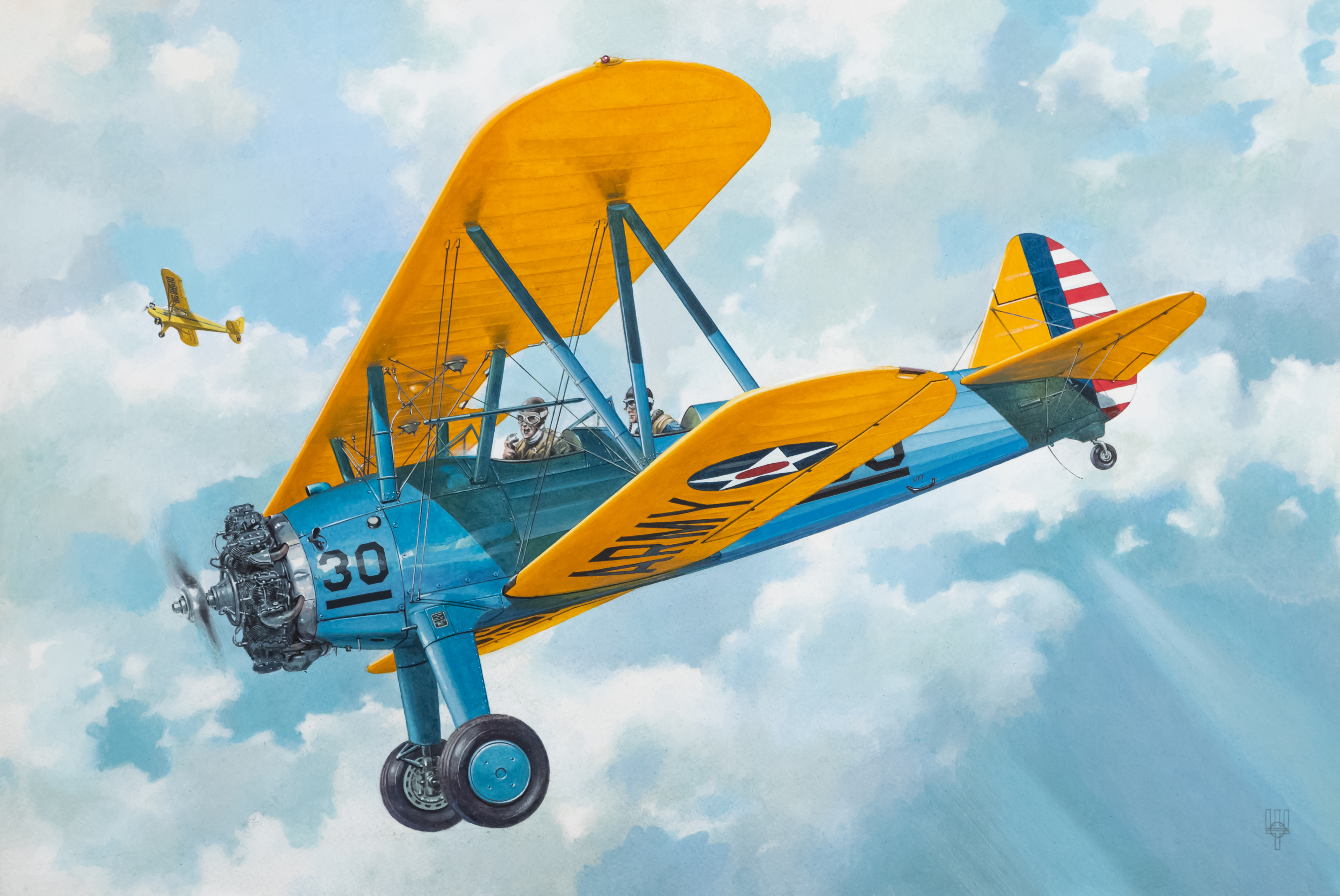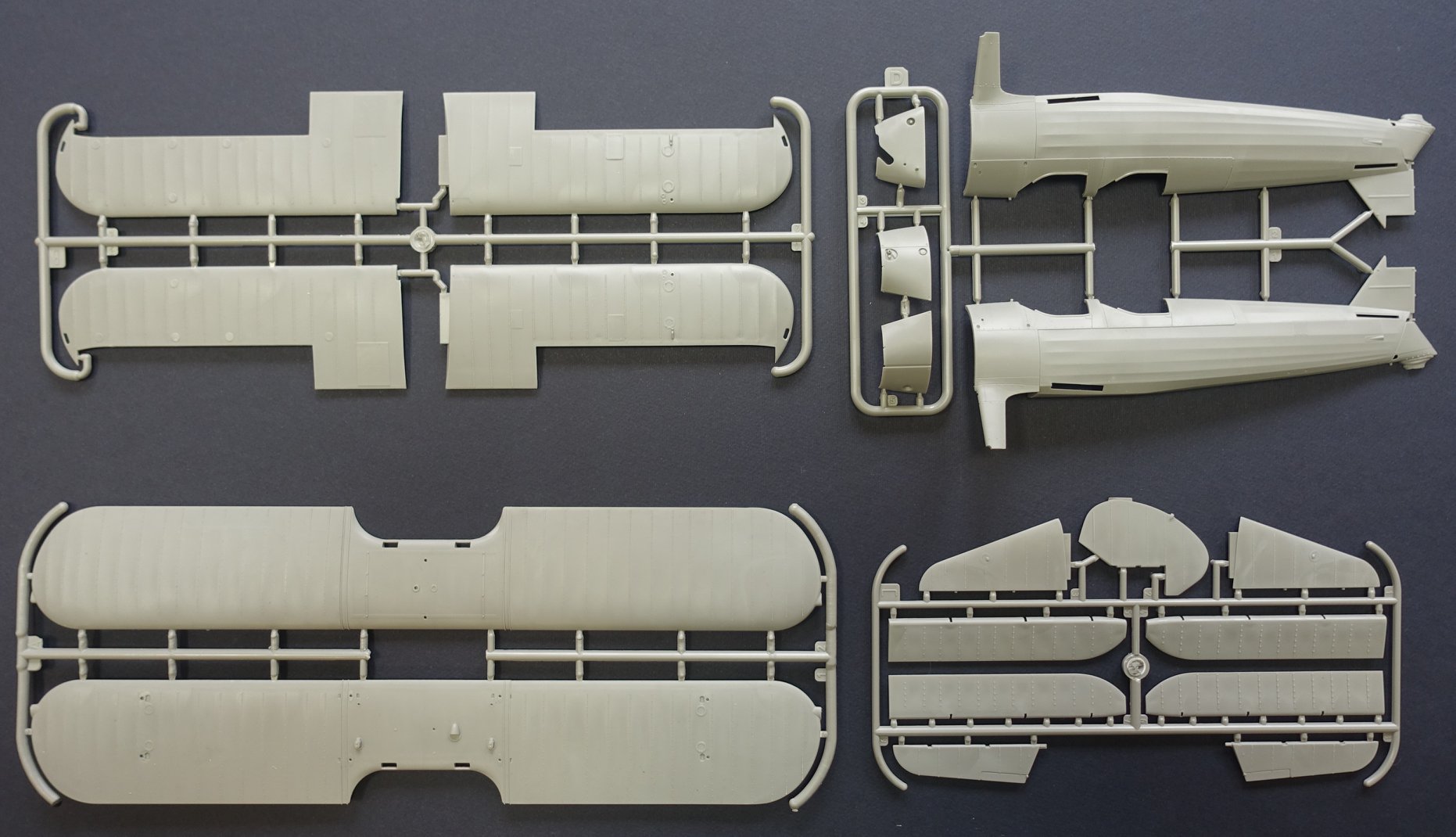Boeing Stearman PT-17 Kaydet

|
In the early 1930s, a small aircraft manufacturer, the Stearman Aircraft Corporation, proposed its own design for a competition announced by the US Army Air Corps to build a pilot training aircraft. It was a biplane of classic construction, which conceptually differed little from many other two-seaters of that era. After extensive testing, the Aviation Corps recognized the Stearman design as the best in comparison with the other tenders, and as early as 1936, the first aircraft, designated PT-13 (Primary Trainer, type 13) was delivered to the US Army. Furthermore, the aircraft attracted interest elsewhere in the military, since the US Navy also needed a primary training aircraft. In 1939, Stearman Aircraft acquired the status of a division of the well-known Boeing company with a separate production facility in Wichita, Kansas. The Second World War became a turning point in the story of the PT-13. Thousands and thousands of new pilots were needed by the Army and Navy, and consequently large quantities of this simple aircraft were needed for their initial training. The Boeing Corporation received more and more orders for the training biplane, of which the total number of aircraft ordered had already exceeded several thousand, and Canada was also interested in the airplane; as a British Crown dominion, it was sending pilots to Britain and its territories in large numbers. In 1941, the aircraft was modernized, primarily with a view to upgrade the power plant; and this time on the same basic airframe a more powerful 220 hp Continental R-670-5 engine was installed. This version was called the PT-17. In total, 3,519 aircraft of this type were produced for the Army alone, and the Navy received more than 3,700 similar aircraft, dubbed the N2S, and used until the very end of World War II. 300 PT-27 aircraft were produced for the Canadian Air Force, which, in view of the harsh climate of the country, was fitted with an enclosed cockpit for pilot and cadet. It was the Canadian pilots who gave the aircraft their name, Kaydet, which did not however become official in the US Air Force. A small number of machines of this type were built with special equipment for "blind flights", and a few more were commissioned by agricultural corporations for spraying crops with chemicals. With the end of World War II, a large number of PT-17s and N2Ss were sold on to third countries where they were in use until at least the mid-1950s, and even more PT-17s were acquired by private owners who, for almost symbolic money, purchased scrapped planes. At present, they are not only objects in collections but also participants in numerous air shows, although many of the planes are almost 80 years old. The design of the aircraft was so successful that it became not only a "flying desk" for thousands of pilots but also a good machine for sports competitions or performing aerobatic routines. |

|


| Performances | ||
| Wingspan, m | 9.80 | |
| Length, m | 7.54 | |
| Height, m | 2.95 | |
| Wing area, sq.m | 25.7 | |
| Empty weight, kg | 876 | |
| Max. take-off weight, kg | 1,195 | |
| Max. speed, km/h | 202 | |
| Service ceiling, m | 4,000 | |
| Engine | 1 x 220 h.p. Continental R-670-5 | |
| Crew | 2 persons | |